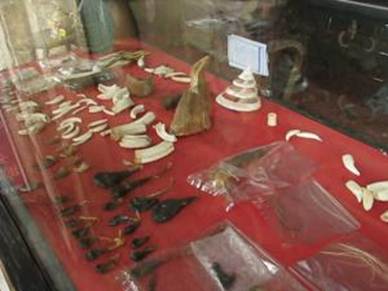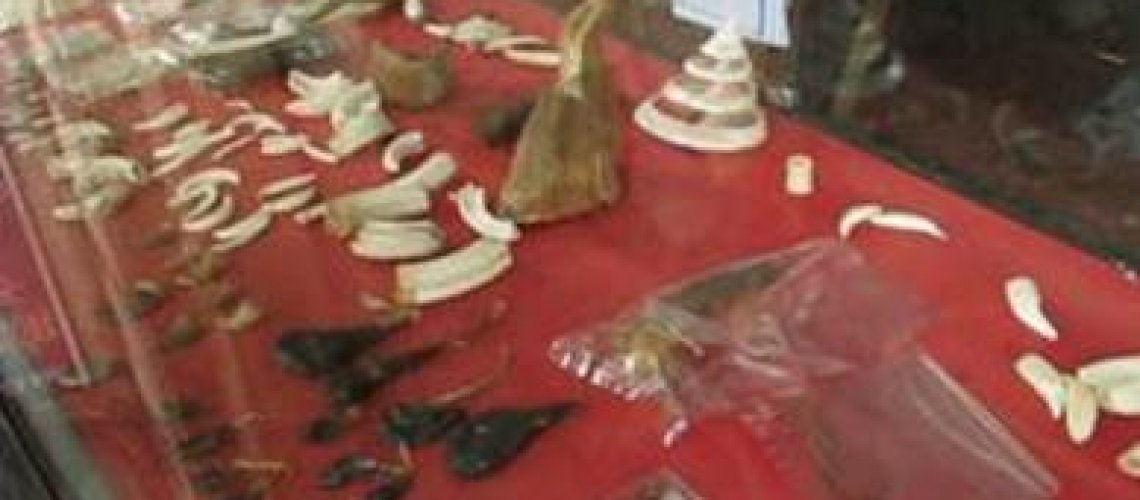
Various animal parts on display in the Chinese medicine quarter of Ho Chi Minh City.
After arriving in Ho Chi Minh City, I begin my journey north. It takes me through Saigon, as the city is still known by the locals, into the Mekong Delta, the jungles on the border of Cambodia and up through the country to the capital, Hanoi. I explore the local perspectives of similar practices that occur across most of the Far East, Latin America, India, Africa and many other parts of the world; the use of animal parts within traditional medicine practices.
It may seem right to certain cultures and wrong to others. What we can’t hide, though, is that it happens, and in the case of rhino horn, on an alarming and violent scale. It spans many levels of society, from crime bosses and law-enforcement officers to villagers, conservationists, veterinarians, diplomats and people dying of disease in Asian countries where rhinos are now extinct because of mismanagement.
Although Vietnam is modernising quickly, traditional medicine has not disappeared and if anything, is gaining something of a revitalisation. Traditional Vietnamese and Chinese medicine evolved together and arguably the development of the two is so interwoven that they are often difficult to separate.
At the Museum of Traditional Vietnamese Medicine (TVM) in Ho Chi Minh City I play the dumb tourist, not the CEO of an organisation trying to help save the rhino from extinction. I learn of a long and time-honoured history here. As far back as the 2nd century BC, hundreds of medical herbs were discovered; among them also were precious compounds such as pearl, tortoise-shell, aloe wood, rhinoceros horn and cinnamon. Through trial and error, many kinds of food, vegetable, fruit, herbs and natural compounds were discovered to be drugs or medicines. Whereas this traditional medicine was once only used for the poor, it is now more likely to be used by the middle and upper classes that find their way to a traditional physician either because Western medicine is not working for them, or because they are sceptical about Western medicine. Today, one-third of Vietnamese rely exclusively on traditional medicine and more than 90 percent use it on a regular basis.
As I walk through the streets where traditional treatments are sold, I converse through my translator with the traders and customers. The treatments are non-threatening, and seem to have therapeutic benefits in calming patients and restoring their confidence. This is because the methods and medicines are so deeply rooted in Vietnamese culture. There is now an increasing interest in using traditional medicine to supplement treatment of chronic illnesses, such as Aids and cancer. I frequently witness a combination of Western and traditional medicine practices. It is not uncommon for a patient to be admitted to hospital and treated by a doctor trained in both disciplines.
In Saigon, I met Stan Gunn, CEO of Vietnam’s largest media company. We spoke at length about the use of traditional medicine and the millennia-old culture. He said a well-structured countrywide campaign against the use of rhino horn would cost in the vicinity of US$40-50 million annually. He asked me: “Do you think spending the same amount in the UK could convince Manchester United supporters to become Manchester City supporters?” The answer was obvious. He went on to highlight, “This is not just thousands of years of culture, this is thousands of years of ingrained DNA we are talking about and no amount of Western-based media campaigns would alter this. Asians just have different cultures and norms to Westerners and find our concerns about the preservation of wild animals curious and funny. To most Asians, wild animals simply represent food, medicine or money.”
These comments were the honest response from a company that stood to make significant personal gains from any possible future media campaigns. He said we were wasting our money with media campaigns in Asia, and money would be better spent protecting the animals directly.
By Damien Mander
June 29 2012 at 12:24pm
Ho Chi Minh City – animal parts in medicine the norm
By Damien Mander

